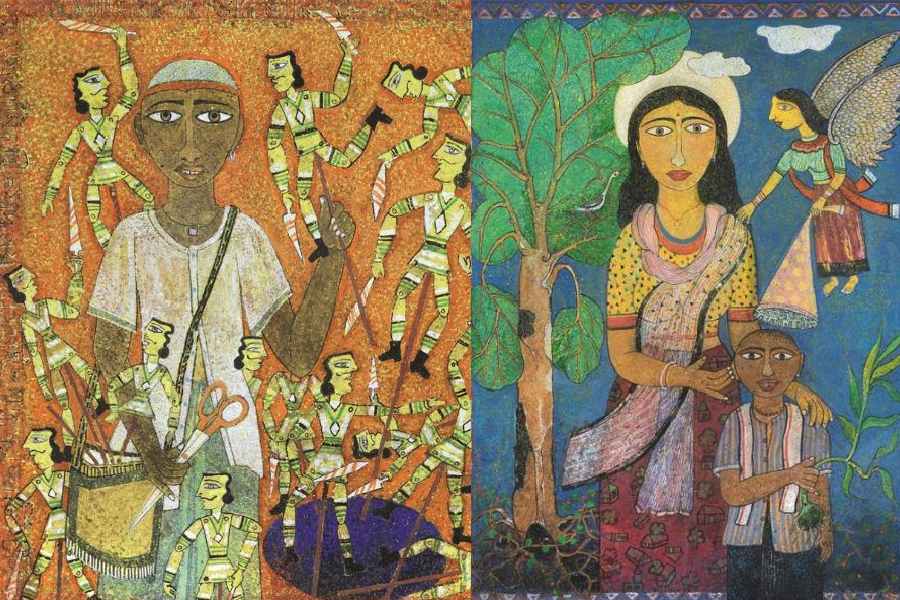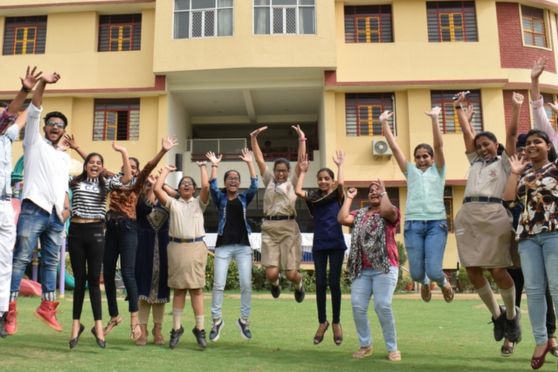True to its title, Songs of the Soil, a retrospective exhibition of Manoj Dutta’s works curated by Debdutta Gupta and organised by Sanchit Art at the Birla Academy of Art & Culture, was full of folksy charm (picture, right). A self-taught artist, Dutta explored various traditions of Indian folk art through his works. This adds a lovely heterogeneity to the styles that Dutta adopted throughout his life, much of which was on view at the exhibition. There were the harmoniously balanced shades of the speckled temperas, the fluid line sketches in ink that reminded one of the illustrations from Sahaj Path, the sombre style of Our Leader was reminiscent of Ganesh Pyne’s Mahabharata series, while the abstract pastel landscapes like Reflection were distinctly post-impressionist.
What Dutta particularly admired was the spontaneity of folk arts and its portrayal of everyday scenes. This was amply evident in the immediacy and the directness of his work — the man selling behalas on a village path, the fortune teller and his parrot, a woman lounging around with her pet marjar are some of the scenes that enchanted Dutta. In his hands, the ten-armed goddess and her family are less divine and more mortal. Ek chala and individual sketches of the deities are done mostly in the style of patachitras but they also have a deceptively childish feel. A small, self-deprecatory comic-style work captured the artist’s studio with Dutta immersed in painting a self-portrait.
The most striking of all the works on display was Our Land — done in his signature tempera which is given the feel of spray paint. It was a mock battle scene with taal patar shepais at war (picture, left). One man, the toy seller with scissors in his hand, towers over this manufactured battle scene, cutting and shaping the narrative and making the puppets dance to his tune — an image for present times if ever there was one. The taal patar shepais are not alone; folk toys are ubiquitous — terracotta tigers, balloons and other toys come alive in these works that are as vivid as they are perceptive.










